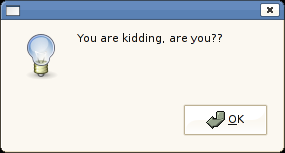enigma: addictive puzzle game with a high dose of dexterity
April 18th, 2007 edited by TinchoThis week, an extra DPOTD article will be published on Friday, remember to check it out!
Shameless self-promotion submitted by Erich Schubert. DPOTD needs your help, please contribute !
Enigma is an addictive puzzle game
A re-invention of the discontinued game “Oxyd” available for Atari, Mac and (some versions) DOS, with hundreds of levels and improved graphics.
The game principle of Enigma is simple: uncover pairs of stones as in the “Concentration” (also known as “Memory” or “Pairs”) board game.
Simple? Yes. Easy? Not by far!
You’ll first have to reach these stones. Your actor is a black marble controlled via the mouse - and influenced heavily by physics. Different floors show different friction properties, blocks might need a good bump to move in the intended direction, bouncers, slopes and rubber bands might be pushing or pulling your marble in a different direction than you’d like it to go. Sometimes you have to hit exactly the right angle to make the marble bounce of a block in space right towards your goal.
And then the blocks are hidden in labyrinths, protected by lasers and traps, and all kinds of puzzles you’ll have to solve first before being able to reach them. There are dozens of items you’ll discover and need to find out how to use right to reach the goal.
Enigma levels are very different in nature. Some levels are well-known Sokoban levels (except you’ll have to be careful to not move boxes you didn’t intend to) and similar well known puzzles ported to be controlled with a marble, some are vast labyrinths where you have to carefully balance your marble on a small ledge. Some levels require speed and mouse dexterity, others can only be solved by bright minds. Having to control 10 marbles connected with rubber bands and charged with different magnetic charges at the same time is just one of the challenges you’ll be facing in enigma. Such levels, that blend all these features into a unique mix can best be described as “Enigma”.
Here are some screenshots, you can find more in the homepage.
Enigma is available in Debian since Sarge and in Ubuntu since Warty. Unfortunately, Enigma 1.00 was not released on time to be included with Debian Etch. Enigma 0.92 was in Etch when the freeze was called.
Posted in Debian, Ubuntu | 6 Comments »









